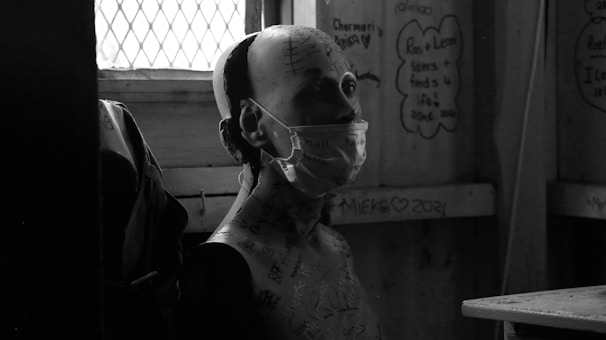Post-Traumatic Stress Disorder (PTSD)
"Healing from Within: Understanding and Overcoming Post-Traumatic Stress Disorder (PTSD)"
INNERSELF
Introduction
Post-Traumatic Stress Disorder (PTSD) is a complex mental health condition that arises from exposure to traumatic events. This article aims to provide a comprehensive understanding of PTSD, its impact on daily life, and strategies to overcome it. We will explore real-life examples, delve into the healing process, and incorporate statistical data to offer a complete perspective.


Part 1: Understanding PTSD
Impact on Daily Life: PTSD can manifest in various ways, including flashbacks, nightmares, and severe anxiety. These symptoms can disrupt daily routines, affect relationships, and hinder professional performance.
Statistical Insight: According to the National Institute of Mental Health (NIMH), an estimated 3.6% of U.S. adults had PTSD in the past year.
Real-Life Example: Consider a veteran who experiences flashbacks of combat. These intrusive memories can occur unexpectedly, affecting their ability to function in social settings or at work.




Part 2: The Origins of PTSD
Impact on Daily Life: Understanding the origins of PTSD is crucial for recognizing its symptoms and seeking appropriate help. It often stems from experiencing or witnessing life-threatening events.
Statistical Insight: The National Center for PTSD reports that about 6 out of every 100 people (or 6% of the U.S. population) will have PTSD at some point in their lives.
Real-Life Example: A person who survived a car accident might develop PTSD, experiencing intense fear and anxiety when driving or even as a passenger.


Part 3: The Path to Recovery
Impact on Daily Life: Recovery from PTSD involves various therapeutic approaches, including cognitive-behavioral therapy and medication. These treatments can significantly improve quality of life.
Statistical Insight: Women have a lifetime PTSD prevalence rate of 9.7%, compared to 3.6% in men, as per a report by CFAH.
Real-Life Example: Someone with PTSD from domestic violence might find solace and healing through therapy, gradually rebuilding trust in relationships and regaining a sense of safety.


Part 4: Rediscovering Strength Within
Impact on Daily Life: Self-help strategies like mindfulness and meditation can be powerful tools in managing PTSD symptoms, leading to greater emotional stability and resilience.
Statistical Insight: PTSD is most prevalent among American adults between the ages of 45 and 49 years old at 9.2%.
Real-Life Example: A survivor of a natural disaster using mindfulness techniques to cope with anxiety and flashbacks, finding peace in the present moment.


Conclusion: Embracing a New Dawn
PTSD is a challenging condition, but with the right support and strategies, individuals can overcome its grip and find a path to healing and renewal.




